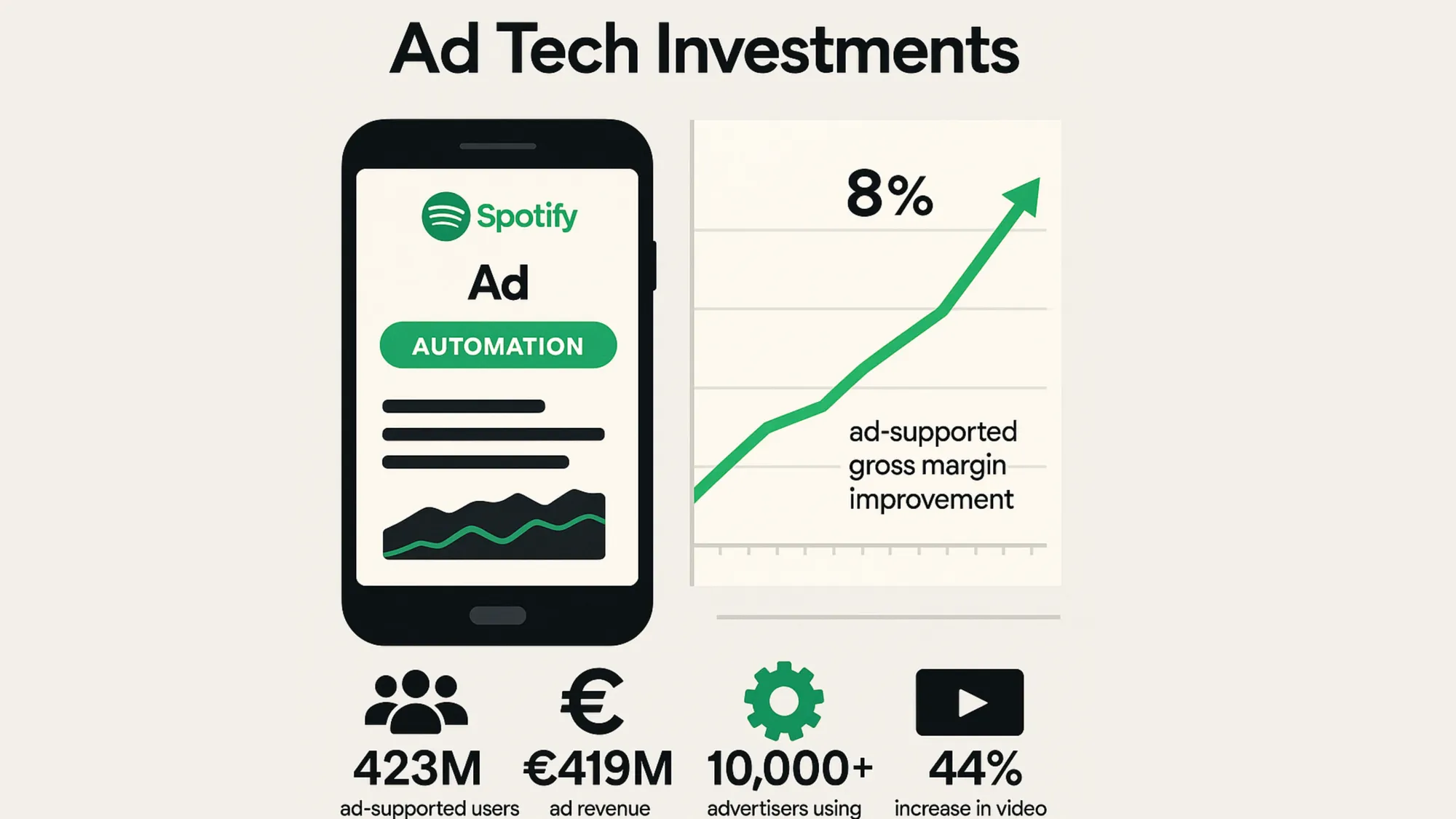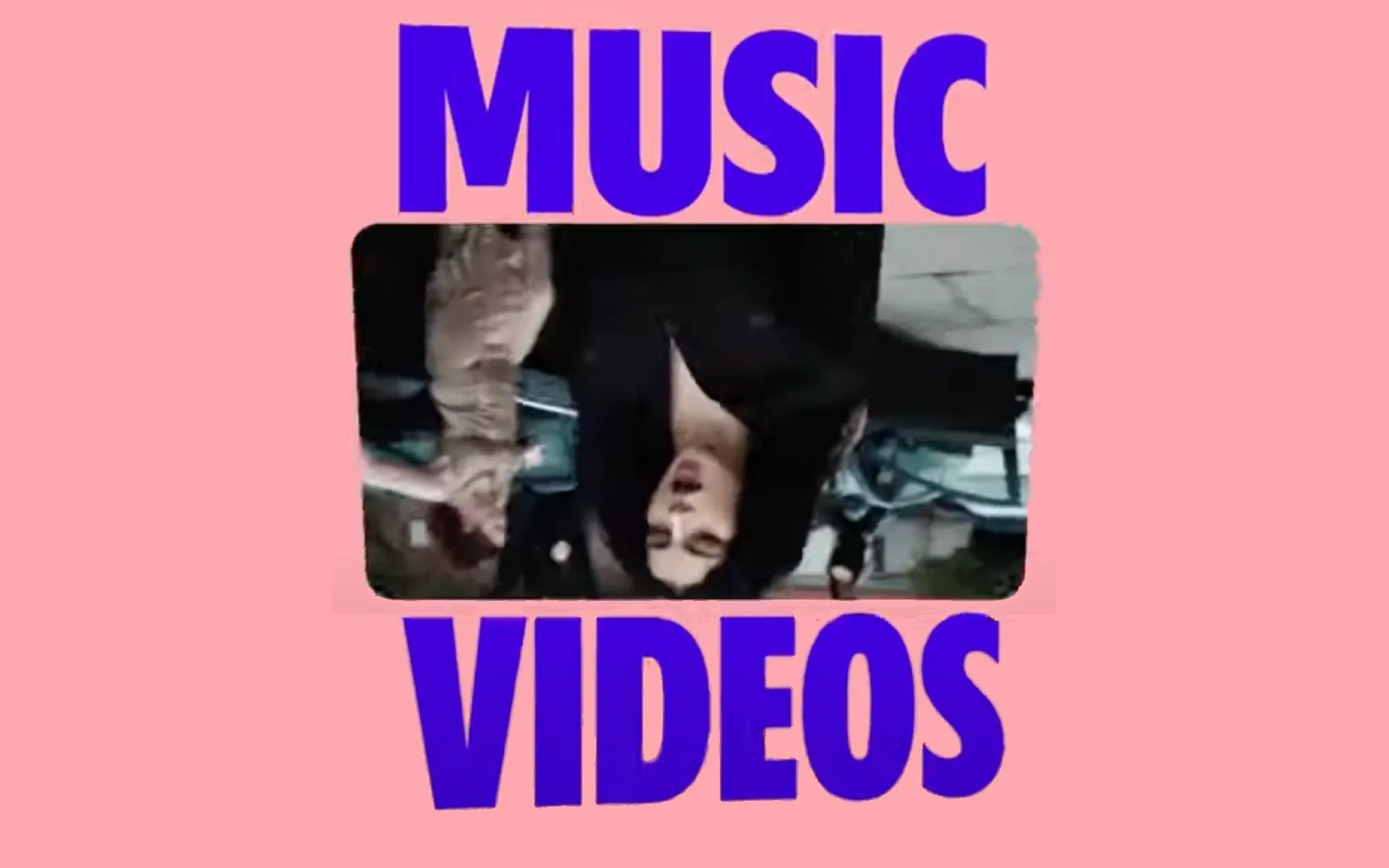Spotify's ad revenue climbs 8% as automation tools transform platform
Streaming giant introduces advanced advertising solutions while reaching 268 million subscribers, but market reacts cautiously to Q2 projections.

Today, Spotify announced its first quarter 2025 earnings results, revealing significant developments in its advertising business alongside broader financial achievements. The April 29, 2025 report highlights how the company is transforming its advertising infrastructure while maintaining strong user growth metrics in an uncertain economic climate.
Get the PPC Land newsletter ✉️ for more like this
The audio streaming service's ad-supported revenue reached €419 million, growing 8% year-over-year (5% on a constant currency basis). This performance came during a period when many digital advertising platforms have faced headwinds. According to the earnings documents, when excluding the near-term impacts from strategic initiatives like optimization of licensed podcasts and the roll-out of the Spotify Partner Program, the underlying advertising growth was in the low double digits.
Particularly notable was the revelation that Spotify's automated sales channels represented the largest contributors to overall advertising growth. The ad-supported user base grew to 423 million, a 9% increase compared to Q1 2024, creating an expanding audience for advertisers seeking to leverage audio and podcast engagement.
The quarter marked a significant advancement in Spotify's advertising technology infrastructure. The company introduced what it termed "Automated Ad Solutions to Transform Buying, Measurement and Creativity" – enhanced tools that include Spotify Ad Exchange, Gen AI Ads, and Spotify Ads Manager, making it substantially easier for advertisers to buy, create and measure campaigns.
In Q1, over 10,000 advertisers utilized these new automated tools, representing a 21% year-over-year increase and marking the first Q1 to exceed Q4 in active advertisers – a notable reversal of typical seasonal patterns in digital advertising. This suggests significant momentum in new advertiser acquisition and retention.
A critical development was the expansion of Spotify Ad Exchange partnerships beyond The Trade Desk to include leading demand-side platforms (DSPs) and technology partners such as Google's DV360 and LiveRamp. These collaborations enhance advertisers' ability to efficiently access Spotify inventory, reach target audiences, and measure campaign performance within their existing buying platforms.

The ad-supported segment's gross margin saw dramatic improvement, reaching 15.3% in Q1, up 885 basis points year-over-year. According to the financial reports, this favorable trend was driven by improvements in podcasts, music, and other costs of revenue, suggesting increasing efficiency in how Spotify monetizes its free listening tier.
Creator monetization enhances advertising ecosystem
A cornerstone of Spotify's advertising strategy is the Spotify Partner Program for video podcast creators, which launched in January in the United States, United Kingdom, Canada, and Australia. The program's early success prompted the company to announce expansion to nine additional markets by late April, including France, Belgium, Luxembourg, Netherlands, Ireland, New Zealand, Germany, Austria, and Switzerland.
This monetization program has quickly demonstrated substantial impact, with the company reporting it paid out $100 million to podcast creators in Q1 alone. User engagement with video content increased substantially, with a 44% rise in time spent with video content overall – a metric that significantly enhances advertising inventory and engagement opportunities.
The focus on video podcasting represents a strategic growth vector for Spotify's advertising business. By creating monetization pathways for creators, the company is simultaneously cultivating higher-value advertising inventory. This symbiotic relationship between creator success and advertising growth appears to be a foundational element of Spotify's long-term strategy.
Beyond podcasting, Spotify also introduced a new Concerts Near You playlist feature during Q1. While primarily designed to enhance music discovery, this tool also creates contextual advertising opportunities for event promoters, tour sponsors, and other music-adjacent marketers seeking to reach fans with relevant interests.

Market reception and advertising outlook
Despite strong advertising metrics, the financial markets responded cautiously to Spotify's overall Q2 guidance. According to news reports, Spotify shares fell following the earnings announcement, with the stock closing down over 3% and dropping as much as 6% earlier in the trading day.
The company forecasts Q2 2025 total revenue at €4.3 billion, with an anticipated gross margin of 31.5% and operating income of €539 million. The guidance incorporates a 170 basis point headwind to year-over-year growth due to foreign exchange rate movements. This suggests that while the advertising business shows momentum, currency factors could impact reported results.
Chief Financial Officer Christian Luiga noted during the earnings discussion: "While our Ads business has remained resilient, we are closely monitoring market conditions to proactively adapt to any changes in the macro economic environment." This measured statement reflects both confidence in current advertising trends and awareness of potential external pressures.
For advertising specifically, the data suggests Spotify is successfully transitioning from traditional direct sales to programmatic and self-serve models, allowing for greater scalability. The combination of creator monetization, automated buying tools, and major platform integrations demonstrates an advertising ecosystem becoming more sophisticated and interconnected with the broader digital advertising landscape.
Ad technology investments driving profitability
The dramatic improvement in ad-supported gross margin – up 885 basis points year-over-year to 15.3% – suggests Spotify's technological investments in advertising infrastructure are yielding significant returns. This margin expansion is particularly noteworthy given that advertising represents a smaller portion of overall revenue (approximately 10%) but contributes disproportionately to the company's improving profitability metrics.
According to the earnings report, Spotify's overall operating income reached a record €509 million, representing a 203% increase compared to the previous year and establishing a 12.1% operating margin. While not broken down specifically, the ad business improvements likely contributed significantly to this broader profitability expansion.
Free Cash Flow reached €534 million in Q1, a record high for first-quarter performance and a 158% increase year-over-year. This robust cash generation provides Spotify with substantial resources to continue investing in its advertising technology stack and creator monetization tools.
Why this matters for marketers and advertisers
For marketing professionals, Spotify's Q1 results reveal several significant developments that could impact advertising strategies:
- The platform's integration with major DSPs like Google's DV360 creates new opportunities for multi-platform campaigns that include audio alongside other digital channels.
- The rapid adoption of automated buying tools (10,000+ advertisers, 21% year-over-year growth) suggests increasing accessibility for advertisers of various sizes, not just major brands.
- The expansion of video podcasting monetization opens new creative formats for advertisers seeking visual engagement alongside audio immersion.
- Improvements in measurement capabilities through partnerships with industry-standard platforms may address historical challenges in quantifying audio advertising effectiveness.
- The contextual targeting potential of features like Concerts Near You demonstrates Spotify's ability to create highly relevant advertising environments based on user behaviors and preferences.
Timeline of Spotify's Q1 2025 advertising developments
- January 2025: Launched Spotify Partner Program for video podcast creators in the US, UK, Canada, and Australia
- Q1 2025: Over 10,000 advertisers utilized new automated advertising tools (21% year-over-year increase)
- Q1 2025: Ad-supported user base grew to 423 million (9% year-over-year growth)
- Q1 2025: Ad-supported revenue reached €419 million (8% year-over-year growth)
- Q1 2025: Ad-supported gross margin improved to 15.3% (up 885 basis points year-over-year)
- Q1 2025: Expanded Spotify Ad Exchange partnerships to include Google's DV360 and LiveRamp
- Q1 2025: Users increased time spent with video content by 44%
- April 29, 2025: Announced Q1 2025 financial results
- Late April 2025: Scheduled expansion of Spotify Partner Program to nine additional markets
- Q2 2025 outlook: Company monitoring advertising market conditions while continuing expansion of automated tools



